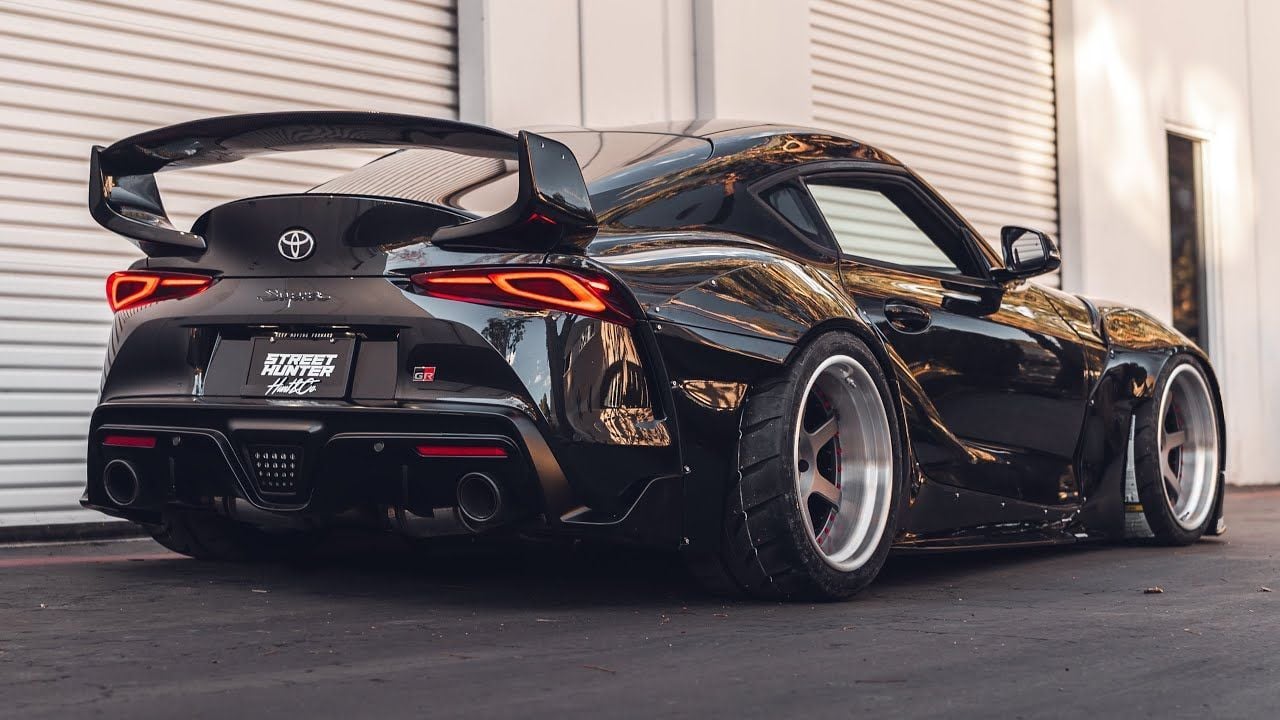
As for standard features, in the centre console there was an extendable map light and a flip-top armrest, which provided storage. The convenience package also included cruise control and special door trim with door pull straps with an optional sunroof.
#Mk5 supra jdm windows
The interior of the Supra had optional power windows and power locks as part of the convenience package. The front suspension consisted of MacPherson struts and a stabilizer bar. The car also came standard with 4-wheel disc brakes and featured a four-link rear suspension with coil springs, lateral track bar, and stabilizer bar.
#Mk5 supra jdm series
The drivetrain for the Supra retained the T series solid rear axle configuration of the Celica in the Japanese MA45 version and a larger F series (and optional Limited Slip Differential) in the MA46 and MA47. The top gear in the 5-speed was its overdrive gear whereas the automatic transmission featured an overdrive gear that would engage at speeds over 56 km/h (35 mph). Both transmissions featured an overdrive gear.
#Mk5 supra jdm manual
Transmission options for the model were either a 5-speed manual ( W50) or an optional 4-speed automatic transmission ( A40D). The federalized model was originally equipped with a 110 hp (82 kW 112 PS) 2.6-litre 12-valve SOHC inline-6 engine. The Supra was first exported outside Japan in January 1979. The installation of the larger engine did obligate Japanese buyers to pay a higher annual road tax, making owning the car more expensive than the smaller Celica. Both engines were equipped with electronic fuel injection. The Japanese model was equipped with the smaller 2.0 L engine so that buyers would not incur an additional tax under vehicle size and engine displacement regulations.
#Mk5 supra jdm code
The Supra was offered with a 125 PS (92 kW 123 hp) 2.0 L 12-valve SOHC inline-six engine ( M-EU, chassis code MA45) or the 82 kW (110 hp 111 PS) 2.6-litre 12-valve SOHC inline-six engine ( 4M-E, chassis code MA46). In April 1978, Toyota began production of the Supra in Japan, as the Celica XX, and sold it alongside the Celica at Japanese dealership sales channels called Toyota Corolla Store. Toyota's original plan for the Supra at this time was to make it a competitor to the very popular Datsun (now Nissan) Z-car. The doors and rear section were shared with the Celica but the front panels were elongated to accommodate the Inline-6 instead of the Celica's 4-cylinder engine. The first generation of the Supra was based largely upon the Toyota Celica liftback, but was longer by 129.5 mm (5.10 in). In January 2019, the fifth generation of the Supra, which was co-developed with the G29 Z4, was introduced. Production of the fourth generation of the Supra for worldwide markets ended in 2002. In 1998, Toyota ceased sales of the fourth generation of the Supra in the United States. The dragon logo was used for the Celica line until it was also discontinued. It appeared on the first two generations of the Supra because they were officially Toyota Celicas. The dragon logo was a Celica logo regardless of what colour it was. That logo, in turn, was on Supras until 1991 when Toyota switched to its current oval company logo. The new logo was similar in size, with orange writing on a red background, but without the dragon design. This logo was used until January 1986, when the A70 Supra was introduced.

It was derived from the original Celica logo, being blue instead of orange. Along with this name, Toyota also included its own logo for the Supra. Interior aspects were also similar, as was the chassis code "A". The first three generations were offered with a direct descendant to the Crown's and 2000GT's M engine. The Supra traces much of its roots back to the 2000GT owing to an inline-6 layout. The 5th generation of the Supra is assembled alongside the G29 BMW Z4 in Graz, Austria by Magna Steyr. The first, second and third generations of the Supra were assembled at the Tahara plant in Tahara, Aichi, while the fourth generation was assembled at the Motomachi plant in Toyota City. Owing to the similarity and past of the Celica's name, it is frequently mistaken for the Supra, and vice versa. In turn, Toyota also stopped using the prefix Celica and named the car Supra.

Starting in mid-1986, the A70 Supra became a separate model from the Celica. The styling of the original Supra was derived from the Toyota Celica, but it was both longer and wider. The fifth generation has been produced since March 2019 and went on sale in May 2019.

The initial four generations of the Supra were produced from 1978 to 2002.

The name " supra" is derived from the Latin prefix, meaning "above", "to surpass" or "go beyond". The Toyota Supra ( Japanese: トヨタ・スープラ, Hepburn: Toyota Sūpura) is a sports car and grand tourer manufactured by the Toyota Motor Corporation beginning in 1978.


 0 kommentar(er)
0 kommentar(er)
